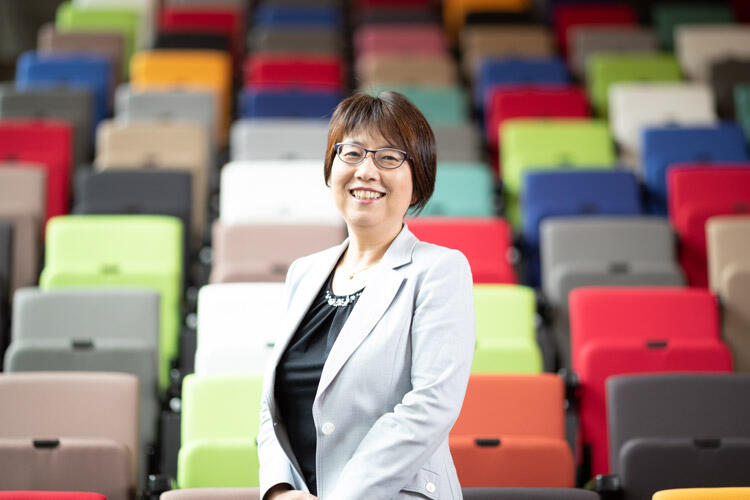
Promoting diversity to create environments that encourage active participation from individuals from various backgrounds is becoming increasingly important worldwide. As a result, diversity is now seen as a significant driving force for accelerating innovation. However, Japan lags far behind other countries, especially regarding female participation in society. Science Portal interviewed Professor Yoko Nameki, who promotes diversity through her work at companies and universities, about the current situation surrounding diversity, approaches towards improvement, and the relationship between diversity and science and technology.
Social change is produced from new combinations
Nameki began by asking, 'What do we need diversity for?'
In Japanese, the word for diversity is 'tayosei' (多様性). A state of diversity is one in which diverse people coexist without being discriminated against based on age, gender, race, religion, etc.
Its roots are in the United States, where the Civil Rights Act of 1964 was passed in response to a growing movement to end discrimination based on race and gender. The following year, the U.S. Equal Employment Opportunity Commission (EEOC) was established, which mandated equal employment opportunities for all people. Its initial goal was to eliminate discrimination, but eventually, the idea that society and companies could develop further through actively promoting diversity became widespread.
Innovation, or social change, isn't produced from entirely new ideas. Instead, it's produced through new combinations of knowledge that have been stockpiled up to that point. Nameki continued, 'Diversity is vital for creating environments where this can happen.'
Conventional thinking is not enough to build sustainable societies. Innovation is needed to create new things and new value for society, and, as a concept, 'diversity and inclusion' is part of this process.' The idea is to have diverse workforces, developing the organization by leveraging everyone's unique characteristics.
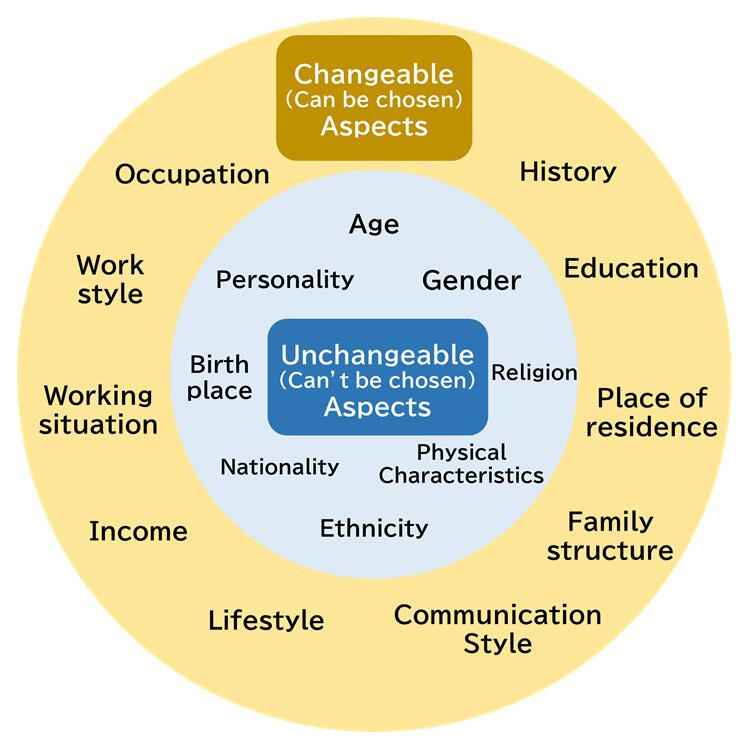
Japan's promotion of women's activities ranks last among developed nations
Examining the current situation in Japan, one area where it lags far behind the rest of the world is its promotion of women's activities. In the World Economic Forum's Global Gender Gap Index 2022, Japan ranks 116th out of 146 countries (in the previous report, it was 120th out of 156 countries), the lowest among developed nations.
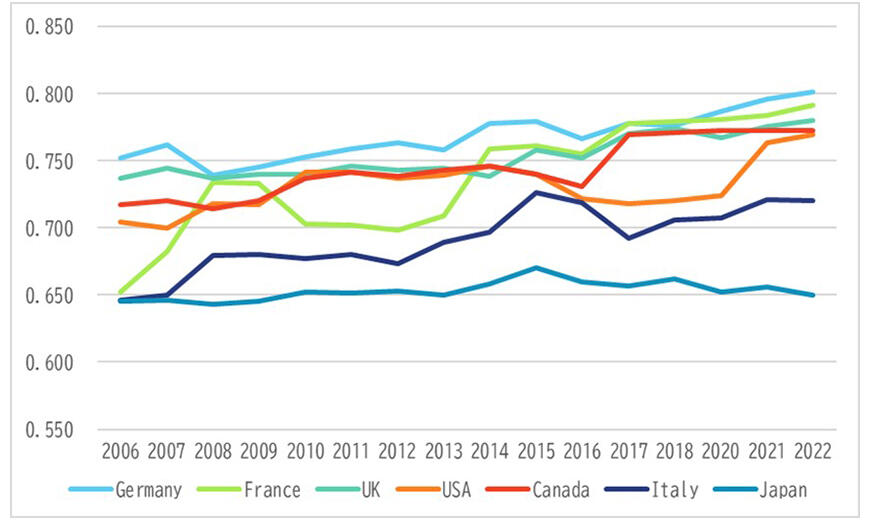
For example, it's become natural for men to take parental leave in the U.S. and Europe. However, even with systems available in Japan, the number of individuals utilizing this leave has barely exceeded 10% of those eligible. So how can we improve this situation?
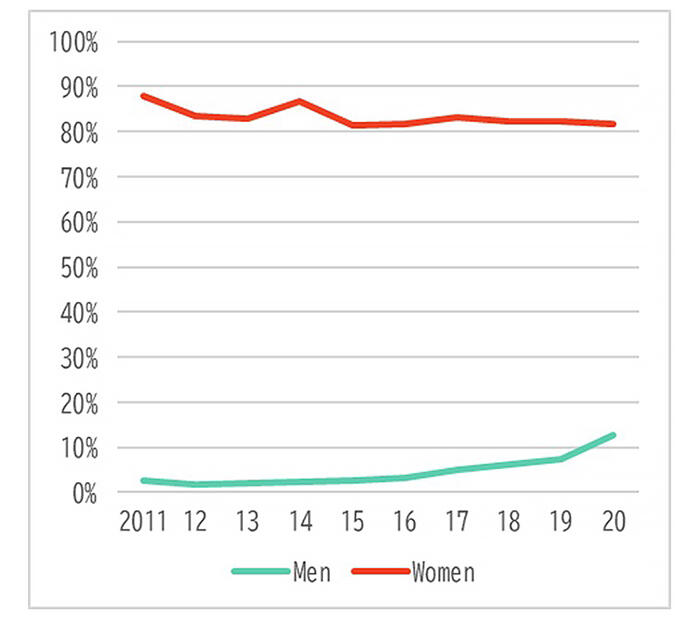
Nameki mentioned that statistically, a higher percentage of men who take paternity leave put a greater focus on their families. It is essential to disseminate these experiences and educate the public.
When one communicates from a minority position within an organization, others may assume their opinion is that of everyone from the same minority. For example, if there is only one woman on a company's management board, her comments may be considered the consensus of all women. However, according to Professor Ginka Toegel from the Swiss business school IMD, if the percentage of a minority group in an organization is around 25 percent, people will recognize that there are a variety of people within this minority. On the other hand, if it is around 35 percent, they will not be considered minorities, and the tendency will be to form a culture that does not care about differences in attributes.
This is vital for creating environments where women can play an active role. In 2003, the Japanese government announced a goal of 'increasing percentages of women in leadership throughout society to about 30% by 2020.'
Tools designed for those with disabilities produce new services
One example of how diversity has encouraged the creation of innovation is the widespread use of tools initially conceived for people with disabilities. For example, Graham Bell invented the telephone when researching methods of communication with the hearing impaired. Subtitles developed for the hearing impaired are also widely used for cross-language communication. These inventions reveal how new perspectives and ideas lead to innovation and create new services.
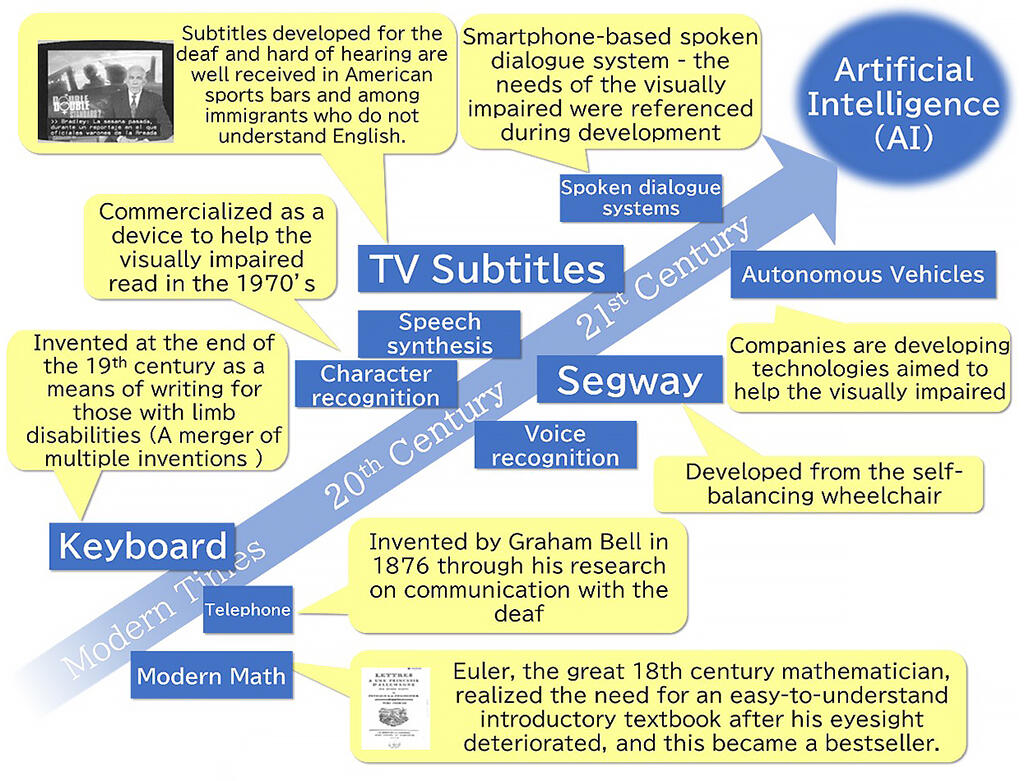
In the world of science and technology, new results are often produced through participation from minorities, expanding research and development that had previously been targeted only at majorities to these minorities. For example, because lab mice were primarily male, developed drugs were sometimes less effective on females. However, the inclusion of women in the study raised issues that had been taken for granted, revealing these types of problems.

In another example, women entering the field of construction led to a need to decrease the weight of heavy metal safety belts. This led to harness-based safety belts being produced. Needless to say, this change also benefited men in the form of loads.
In addition, while men used to be the majority of car buyers, women now account for about 45 percent of all driver's license holders. Furthermore, about 60 percent of women are involved in the decision-making process when purchasing a car. In response to this shift, women became involved in all production processes, including development, design, and manufacturing. In one case, this involvement led to products that appealed to families, such as hands-free door openers that can be opened with the feet while carrying a child, producing increased sales. In manufacturing, parts shelves were lowered to make it easier for women to work, creating a more comfortable work environment for shorter men. 'I believe that this kind of process innovation, not just product innovation, is a catalyst for promoting diversity.' Nameki said.
Recognizing unconscious bias is vital
Unconscious bias may be one reason for insufficient participation from women in Japanese society.
For example, a high percentage of math and science teachers are male, which leads to an unconscious bias that women are worse at science and math. In fact, data shows that female students who receive instruction from female teachers in science and mathematics are more likely to say that they believe they are science-oriented, as this reduces their own unconscious bias.
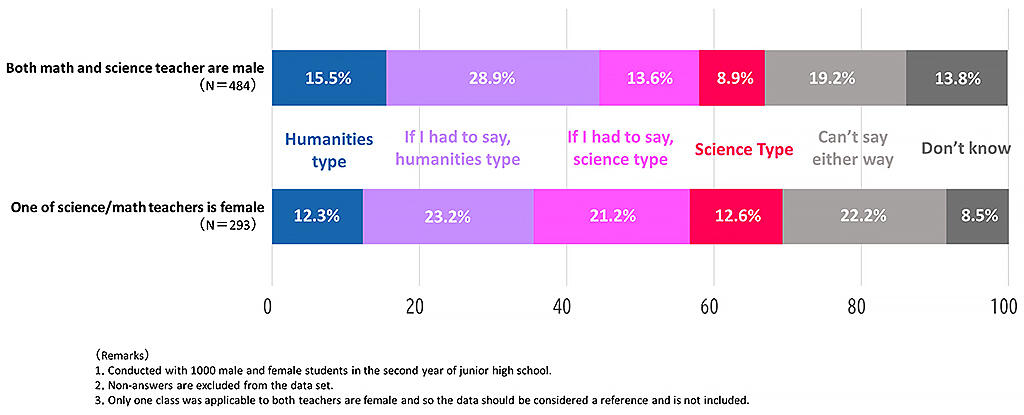
The division of the arts and the sciences, in itself, may also hinder innovation. There's no need to differentiate a wide variety of disciplines in a binary fashion with the assumption that individuals have an aptitude for one or the other. Nameki herself, majored in sociology at university, became a systems engineer, and then went to graduate school to obtain a master's degree in engineering. This process shows how responding to challenges flexibly can expand one's possibilities.
However, it's not easy to get rid of unconscious bias. For this reason, Nameki says, 'I believe that being aware that we have unconscious biases is a first step toward creating a society that ensures diversity.'
Of note, since humans have unconscious biases, artificial intelligence (AI), which learns and grows from data created by humans, is likely to have the same biases. For example, if AI is used to create a fair selection process for hiring engineers, but past hiring history is biased toward males, the AI will learn this and may not be able to make accurate decisions. Increasing the fairness of the data AI learns from is another major future challenge.
We need equity, not equality
Nameki says that to achieve diversity and inclusion, it is not "equality" of results, but "equity" through giving people the same opportunities that is necessary. It is important to make the best use of various people by giving them fair opportunities. Nameki also focuses on creating an environment where the elderly can play an active role and proactively gives young people opportunities.
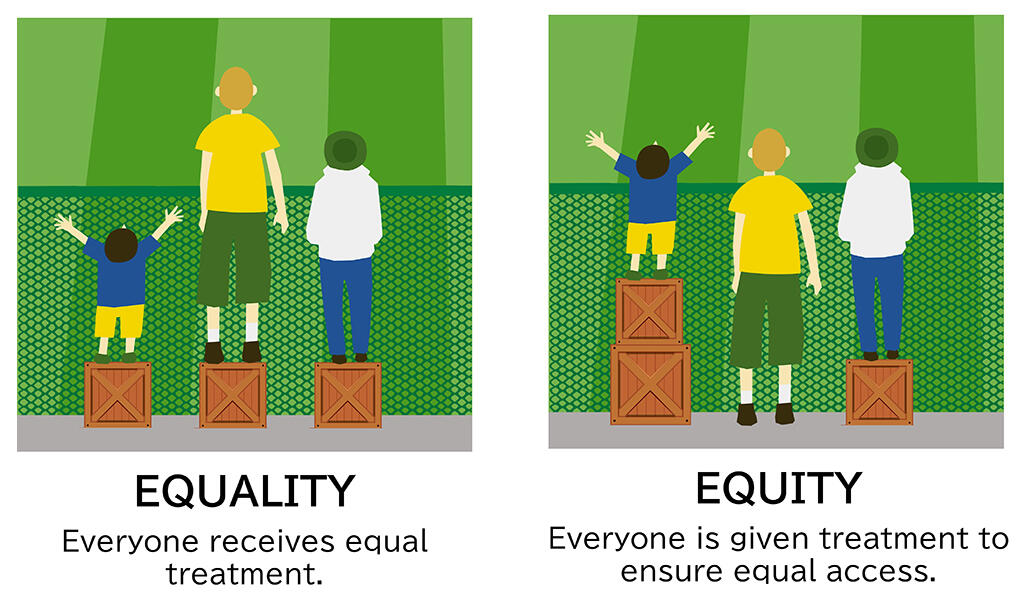
'I think we must promote the creation of environments where people can freely do what they want without worrying about failing or lacking experience.' For this reason, Nameki hopes to see further progress in industry-academia. If companies work with universities to nurture young people and conduct joint research, it is more likely that innovation taking advantage of the power of young people will occur.
As a message to all readers, Nameki said, 'Please have the courage to step out of your comfort zone and communicate with the new people you meet. You will gain a lot of awareness, leading to innovation.' This mindset will be vital not only for young people but for all future generations as well.
Creating new encounters for all and integrating knowledge is sure to change society.
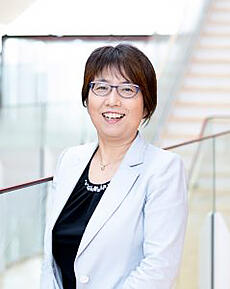
NAMEKI Yoko
Specially Appointed Professor, Faculty of Commerce, Chuo University
After graduating from college, she joined IBM Japan, Ltd. and played an active role as a Distinguished Engineer. With her experience of childbirth, childcare, and graduate school as an active member of society, she aims to build a society where diverse people can play an active role by utilizing technology. She has been in her current position since 2021.
Original article was provided by the Science Portal and has been translated by Science Japan.




